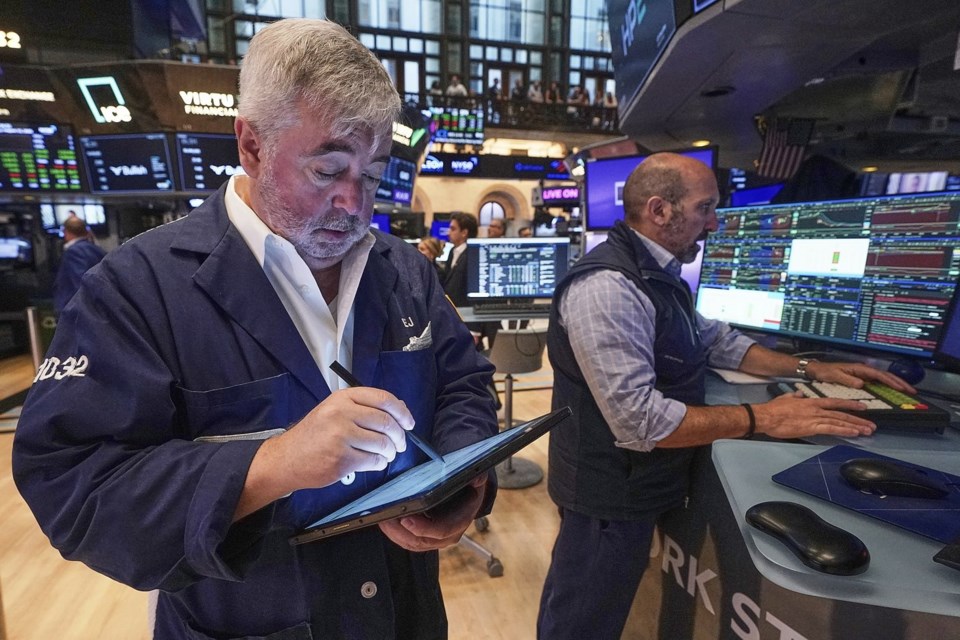NEW YORK (AP) — Wall Street is edging back from its record heights on Thursday after a disappointing report said inflation was worse last month at the U.S. wholesale level than economists expected.
The S&P 500 slipped 0.2% from its all-time high set the day before. The Dow Jones Industrial Average was down 104 points, or 0.2%, as of 9:35 a.m. Eastern time, and the Nasdaq composite was shaving 0.1% off its own record.
Stocks dipped after data from the U.S. government said prices at the U.S. wholesale level jumped 3.3% last month from a year earlier. That was well above the 2.5% rate that economists had forecast, and it could hint at higher inflation ahead for U.S. shoppers as it makes its way through the system.
The discouraging data forced traders to second guess their widespread consensus that the Federal Reserve will deliver some relief next month by cutting interest rates. Lower rates can boost investment prices and the economy by making it cheaper for U.S. households and businesses to borrow to buy houses, cars or equipment, but they also risk worsening inflation.
Following Thursday’s hotter-than-expected inflation data, traders now see a 5% chance that the Fed may hold rates steady at its next meeting in September, according to data from CME Group. A day earlier, they were betting on a 100% certainty that the Fed would cut its main rate for the first time this year.
“This doesn’t slam the door on a September rate cut,” but it may raise a bit of doubt, according to Chris Larkin, managing director, trading and investing, at E-Trade from Morgan Stanley.
Thursday’s disappointing data followed an encouraging update earlier in the week on prices at the consumer level. A separate report on Thursday, meanwhile, said fewer U.S. workers applied for unemployment benefits last week. That’s a good sign for workers, indicating that layoffs remain relatively low at a time when job openings have become more difficult to find.
But a stronger job market could also give the Fed less reason to cut interest rates in the short term.
The data helped send Treasury yields higher in the bond market. The yield on the 10-year Treasury climbed to 4.26% from 4.20% just before the data reports’ release.
On Wall Street, Tapestry helped lead the market lower as the company behind the Coach and Kate Spade New York brands feels the pressure of tariffs. It said tariffs and duties could shave $160 million off its profitability in its upcoming fiscal year, and its forecast for profit fell short of analysts’ expectations even though its forecast for revenue topped expectations. Its stock fell 16.9%, even though it reported a stronger profit for the latest quarter than analysts expected.
Deere fell 8% even though the machinery maker also delivered a better profit than expected. There, too, the focus was on where profits are heading in the future. It cut the top end of its forecasted range for profit this year and said its customers “remain cautious amid ongoing uncertainty.”
In stock markets abroad, indexes were mixed across Asia and Europe ahead of a key meeting between U.S. President Donald Trump and Russian President Vladimir Putin on Friday.
___
AP Writers Teresa Cerojano and Matt Ott contributed.
Stan Choe, The Associated Press




